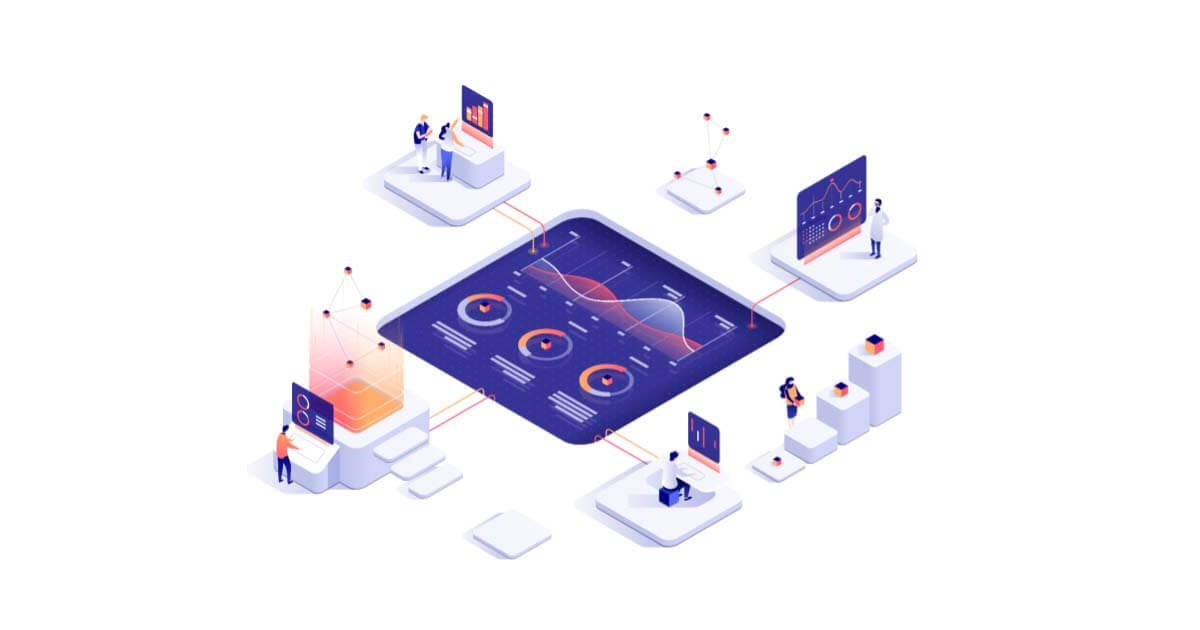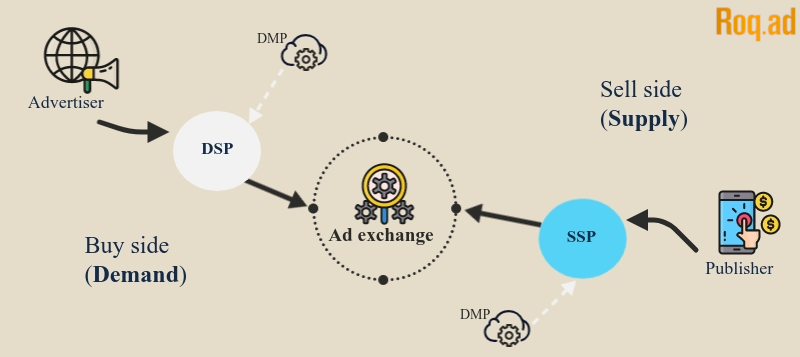

This acronym can sound mysterious if you’re new to the programmatic advertising world. But don’t worry, we’re about to clarify everything.
DSP stands for demand-side platform, and, shortly put, it’s software that helps advertisers buy ads in an effective and automated way. In this article, we are going to talk a bit more about DSPs and explain their role in the large programmatic advertising ecosystem.
Whether you are an advertiser or a marketing agency, at some point you’ll probably need to buy ads. In general, there are two ways to do that:
- Manually (you talk to publishers, negotiate conditions, set rates, etc.)
- Automatically (you use specific software that enables you to buy media and display your ads on various websites automatically)
Today, the second way is far more popular, and it’s frequently referred to as programmatic advertising or programmatic media buying. There are three major models based on which programmatic media buying works:
- RTB (real-time bidding): The ads are published depending on who wins a given auction (advertisers compete against each other in so-called bidding wars).
- Programmatic direct: Here, there are no auctions; everything happens based on a fixed CPM (cost per mille) rate.
- Sometimes, there is also a third model called PMP. This acronym stands for the private marketplace, and this model is very similar to the RTB one, but only invited advertisers can participate here.
Now we can talk about DSPs. As you can see, there is quite a lot going on in this environment – there are publishers, advertisers, and auctions. To make this even more interesting, everything is based on marketing data that comes from different sources (e.g., cookies, CRMs, DMPs – data management platforms, and from the publishers themselves). You need online platforms that help both parties manage the media buying process to make it all work flawlessly. And these platforms are called DSP (demand-side platform) and SSP (supply-side platform).
Let’s talk more about them.
What is the role of a DSP?
The name demand-side platform comes from the business where we usually have two parties – one has a specific demand (e.g., to buy a product or use a service), and the second one provides supply (said product/service). The demand-side platform operates based on the advertisers’ needs and requirements. It’s a third-party software (which means it’s independent of Google, Facebook, or any other large advertising ecosystem), enabling advertisers to purchase, analyze, manage and publish their ads in many advertising networks. And all of that is available from a single dashboard.
You can think of DSP as a more comprehensive Facebook Ads Manager. Facebook’s solution works only with this particular social media platform, while DSPs work with several different platforms. But the general idea is pretty much the same.
With a DSP, you can make the most of the following advertising channels:
- Connected TV
- Display ads
- Mobile ads
- Video and audio ads
- DOOH
- Native advertising (it’s a form of advertising that adjusts to the form and function of the location where it’s displayed)
Pros of DSPs
You now know what DSPs are and what they are for. Let’s now analyze what they’re good for.. Of course, the most significant pros are already apparent – with DSPs, you improve your performance and save a lot of time. But there’s more:
- Real-time operation: You don’t have to wait hours to approve your ads. You can easily add and manage new campaigns without the need for the previous ones to end.
- Scalability: There’s no better way to introduce new advertising channels to your campaigns.
- Accurate targeting: Because DSPs are 100% data-driven, you can understand your customers better and target them more effectively.
- High-end support: DSPs usually offer access to high-quality customer service and a knowledge base so that you have all the support you need to get your ads up and running.
DSP vs. SSP
Earlier in the text, we mentioned SSPs. What are they? This acronym stands for supply-side platform. Publishers use them in order to sell ads available on their websites for the highest possible price. SSPs help them manage the whole process and oversee it. To understand how that relates, take a look at this picture:

We hope that now you understand what DSPs are all about and why they are so useful in today’s business and marketing environment.
At Roqad, we work with DSP providers on a daily basis. If you want to know more, feel free to drop us a line.

